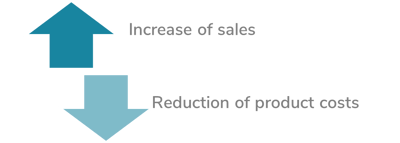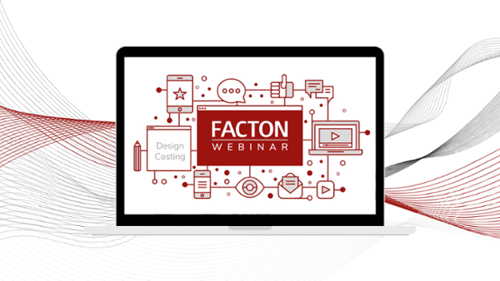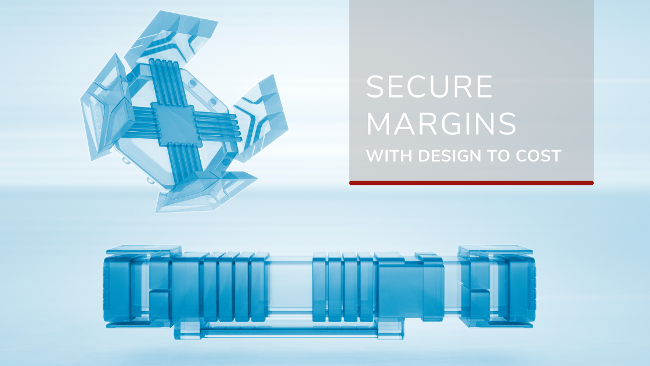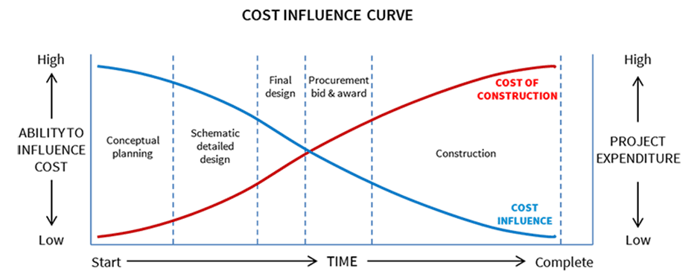Cost accounting may be unpopular for engineers, but already in product development, it contributes to achieving the company's profit and cost targets. Therefore, product design can no longer be about functionality, feasibility, quality, and meeting deadlines alone. The development goal includes considering product costs and keeping total costs as low as possible.
At any point in product development, achieving target costs and margins is challenging. In this context, development teams are aware that late consideration of the expenses in product planning can lead to time-consuming and cost-intensive adjustments and that changes can only be made to a limited extent. There is often a lack of opportunities to examine the cost and product structure simultaneously. The goal must be to control product costs early in the product development.
Why does product costing fail during development?
Product costing against target costs repeatedly requires data and information from development, project and program management, production, business development, and control. Since each division usually works with its systems, (too) much time is spent on data consolidation.
The number of tools used is driven by the stakeholders, who each view the project and their requirements for working and reporting capabilities. As a result, many files, applications, and information are stored in individual departments, different folder structures, or e-mails.
Two key issues exist that complicate the successful implementation of product costing during development:
- Use of different project tools that do not provide a uniform cost view.
- Lack of mechanisms for the consistent, automated integration of all necessary costing and product data
Manual data consolidation from previous project documentation, current and latest project sketch data, CAD data (from 2D, 3D, JT files or drawings), and purchasing info records across multiple locations require high resources. Often, information relevant to costing is not considered, or outdated values are included in calculating product costs.
 If errors in costing are recognized too late, new discussions about profitability analysis often arise, and costing starts all over again.
If errors in costing are recognized too late, new discussions about profitability analysis often arise, and costing starts all over again.
Suppose the costing error is not recognized, and profit margins and loss risks in product costing are calculated with outdated values. In that case, the risk of being responsible for an unprofitable project increases throughout the project.
A lack of a standard cost view in the project and missing mechanisms to integrate current production and cost data from the PLM, ERP, or other systems can misdirect product development. The new price point must be raised in the middle or upper market segment for the product initially intended in the low-price market segment.
How can product and production costs be reliably calculated in development?
Many companies have excellent communication systems for collaborative work and mapping the technical perspective of a product for all functions involved. The financial aspect - i.e., the calculation of product costs and the simultaneous consideration of the market side - is segmented in different tools and spreadsheets and the common view is missing.
But what requirements must be met to control costs efficiently?
Increasing confidence level and degree of availability of product and costing data
Trustworthiness is achieved when the sources from which the data is fed are known. For example, a network of company-owned and up-to-date data is used by consistently linking systems and databases that are already deployed. The project team can make informed product decisions based on reliable data.
Using project data that is consistent over time and in several dimensions
- ... from the details of the required machine and material to the overall picture of a complete project or even program.
- ... from the main product to the different options, including picking rates and variations.
- ... from initial costing to EoP/EoS (end of production/end of service), including transfer of calculation from one costing point to the following, version control, and change management in costing.
- ... within the costing scheme with a consistent definition of the costing scheme in the costing process and the ERP environment, as well as a consistent costing of sales and a consistent definition of the relevant KPIs.
- ... between different IT systems, mainly the PLM system regarding the product structure and options and ERP regarding the costing scheme, metadata, and cost factors.
Environment in which alternatives for product planning can be quickly simulated
At a very early stage, it is essential to clarify the central issues of the project and to be able to outline the effects of decisions to the management transparently.
What happens when there is a change of material?
What happens when the production method is changed?
What happens when volumes or prices are adjusted?
Best case scenario: Calculate product costs during the development process
Our solution approach starts directly with the control of product costs. Enterprise Product Costing helps industrial companies to consistently analyze their profit margin and increase it either by reducing product costs or by increasing sales.  Enterprise solutions in design costing enable project teams to consider technical requirements and market-related innovations. At the same time, the product development costs and the economic consequences of product decisions on materials and production processes are tracked during product development. Engineers with a technically good but expensive solution are won over at an early stage to develop product alternatives that offer, for example, a better cost structure for the overall product.
Enterprise solutions in design costing enable project teams to consider technical requirements and market-related innovations. At the same time, the product development costs and the economic consequences of product decisions on materials and production processes are tracked during product development. Engineers with a technically good but expensive solution are won over at an early stage to develop product alternatives that offer, for example, a better cost structure for the overall product.
The availability of a single source of costing, which is also an application for efficient costing during development, simplifies coordination processes in product planning and product support. With a development-accompanying control of the product and cost structure, the profit margin of products and projects is focused on at any time.
Webinar Recording: Target costs under control with practical design to cost
Learn how to overcome challenges in target costing.








